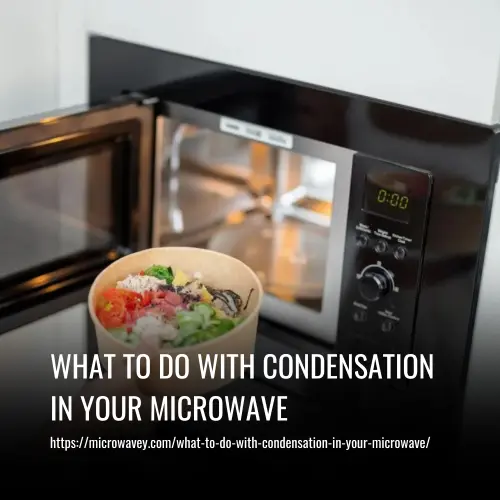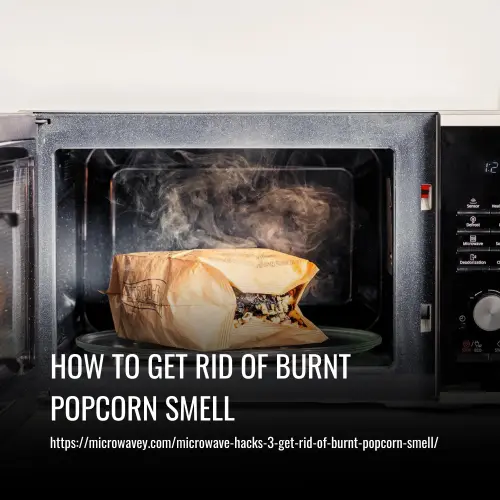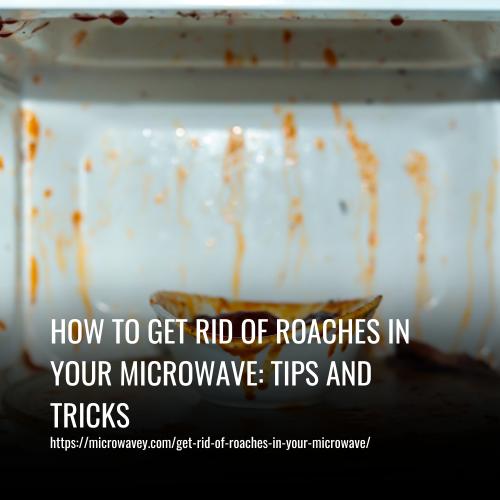Condensation on the inside of a microwave is normal and often forms when cooking moist foods inside. Sometimes condensation can form on the inside of the microwave, on the door, or in between the glass panes for various reasons, but it will dissipate over time.

Main Causes of Condensation Inside the Microwave
Generally, the most common form of condensation happens on the inside of the microwave. This is generally caused by microwaving moist foods or liquids and is a normal occurrence. Sometimes, liquids can splatter on the inside of the microwave or water can boil over, creating a puddle of water on the microwave plate, and the excess moisture inside your microwave causes that condensation.
Especially if the excess water is puddled up because of the water boiling over, you should allow it to cool down before cleaning it up. If you clean it up right away, you could get burned. If there is only a little bit of condensation, it will dissipate with time.
How to Get Rid of Condensation
To get rid of condensation, wipe up the excess moisture with a dry rag or paper towel if there’s a lot of moisture, or simply allow it to dissipate. To speed up this dissipation, leave the door open to allow more air to get inside the microwave. The water droplets formed on the inside of the microwave will evaporate over time.
Usually, the interior moisture will dissipate within 10 to 15 minutes. If it doesn’t dissipate quickly enough, there could be a bigger issue with your microwave that you may need to get fixed.
You should avoid heating food in a microwave that has a lot of moisture inside, as this can cause cross-contamination of foods when moisture droplets from the foods that created the condensation drip onto the food you microwave afterward. It can also add odor to your food if you don’t wipe out the moisture first.
Sometimes, an excessive amount of moisture can get into the cracks of the appliance and ruin some of the components inside, especially if there is a crack in your microwave. You can seal these off to avoid moisture from getting in by taping over the crack with industrial tape.
Condensation on the Front of the Microwave

Condensation can also be caused by layers of moisture on the outside of your microwave. It’s generally caused by outside sources and not the microwave itself or the food you cook inside it. Condensation often gets on the outside of your microwave if it is above the stove, as when you boil water or cook something with a high water content, steam rises and gathers on the exterior of the microwave.
This condensation will dissipate with time and is only really concerning if water droplets get between the exterior and interior layers of glass on the microwave door. After cooking, you can avoid this issue by opening the microwave door and leaving it open for 10 to 15 minutes so that air can get inside the door crevices and dry up any moisture that got inside.
How to Avoid Condensation
Because condensation inside a microwave is most commonly caused by heating foods or liquids with a high water density, you can avoid condensation by covering your food with another plate or a microwave plate cover.
Stores that sell appliances like microwaves will often sell these plate covers, which are made of plastic and are meant to cover your entire plate to prevent food from splattering around the inside of your microwave and prevent too much condensation from forming. Some of these come with magnets on the top so you can adhere the cover to the roof of your microwave so it stays out of the way while you put your plate in your microwave and take it out.
You can keep condensation from forming on the front of your microwave if it’s installed over your kitchen stovetop by keeping your pots and pans covered when boiling water or cooking foods on your stove that have a lot of water content in them.
Hot steam that rises from your pots and pans can create this condensation on the glass front or the plastic surface of your microwave, and it can even run down the plastic paint on your microwave walls, creating watermarks that will generally look unappealing. You can also prevent condensation from forming on the front of your microwave by turning on your microwave fan, which will suck in all the excess moisture and smoke rising up toward the microwave.
Rare Causes of Condensation

If you’ve tried airing out your microwave but it there is still too much moisture and condensation for your liking or the condensation keeps forming every time you heat something, it could be caused by blocked vents in your microwave. These vents have fans that help to push moisture from the inside of the microwave to the outside so that your microwave doesn’t fill with too much steam. You’ll find these on the sides or at the bottom of the microwave, but if they’re blocked in some way, it can prevent the microwave from being able to expel moisture.
If your microwave stays moist for too long, it can cause bacteria to grow and even cause mold inside. Oftentimes, the simplest thing that prevents this from happening is ensuring the vents are not blocked. Microwaves that normally hang above your oven will generally have these vent fans on the bottom, so they should not be set and used on a table for long periods of time.
If the vents are on the sides, be sure to allow these vents to breathe by moving your microwave away from other appliances or walls. If it’s not blocked by any of these things, the issue could be a buildup of dirt in the vent. If this is the case, you may have to take the vent out, clean it, and ensure that no mold has grown in the vent or anywhere inside the microwave. Clean out any mold by heating a glass of vinegar so the vapors can kill the bacteria inside.
FAQs
Condensation in your microwave is caused by the steam released from food during the heating process, which then condenses on the cooler surfaces inside the microwave.
Condensation itself is not harmful, but it can lead to a build-up of moisture that could potentially cause rust or damage to the interior of the microwave if not cleaned regularly.
To prevent condensation, cover your food with a microwave-safe lid or paper towel to absorb excess moisture while heating. Additionally, allowing food to stand for a few minutes after microwaving can help reduce steam and condensation.
Yes, you can still use the microwave if there is condensation inside. However, it is important to wipe down the interior regularly to prevent any potential damage from the build-up of moisture.
Condensation itself should not affect the taste of your food. However, if the moisture is not cleaned regularly, it could lead to bacterial growth and affect the taste and safety of your food.
To clean and remove condensation, simply wipe down the interior with a damp cloth or sponge and a mild detergent. Additionally, leaving the microwave door open for a few minutes after use can help to air it out and reduce condensation.
Conclusion
In conclusion, dealing with condensation in your microwave may seem like a small issue, but it can have a big impact on the performance of your appliance. By following these simple tips and tricks, you can easily prevent and resolve condensation build-up, ensuring that your microwave continues to work efficiently for years to come.


